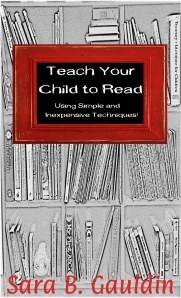My child can read lots of books, but I’m not sure they understand what they read. Teach you Child to Read!
As your child has become a literate person your entire focus has been on “cracking the code” of characters and phonics. This has been a major task, but calling out the words is only half of “reading.” Children need to learn how to process the words that they have read so that they can use the information. When an adult reads, they reflect on the meaning of the words. Reading a letter from a friend allows the reader to catch up and communicate. Reading a bill allows the adult reader to understand an obligation. Reading a novel allows the mature reader to enter the story and view it using their imagination. As the story unfolds a mature reader can follow the plot, make predictions, and picture the characters and setting of the story. Most adults see this level of processing and comprehension as intuitive. They internalize and process the text without really thinking about what they are doing. It seems like a very natural thing, but in reality, reading comprehension is a learned skill and set of behaviors. The skills your child will use for comprehension in a school setting will become very specific and directed. As a child begins to read, asking the right kind of questions and leading a child to discuss the material, they are reading is an excellent way to use your child’s natural curiosity to harness to attain a better understanding of the written word!
Many of these strategies work well with younger children who are being read to as well.
Try This!
Before reading a story, take your child on a picture walk. This means looking at each illustration with your child and asking him or her to describe what they see. Ask questions about the picture and point out any captions. If the illustration shows characters or setting, be sure to point out any information that they might share about them.
Read stories more than once. Repetition is helpful for building fluency or smooth and meaningful reading at a steady pace. If your child is trying to break down each word, it is difficult for them to focus on what the words are actually saying.
Ask your child these types of questions to make sure they understand what they read!
-Where does the story take place?
-When does the story take place?
-Who are the characters?
-Tell me about the character…
-What is the title of the story? How can you tell?
-What is this story all about?
-Did the story end the way you thought it would? Why or Why Not?
-What is the problem in this story?
-What would you do solve the big problem in this story?
-How would you describe the main character?
-What parts of the story could really happen?
-What parts of this story are make believe?
-Describe the most fun part of this story.
-Why do you think the author wrote this story? To entertain you (give you a fun story to enjoy), to persuade you (to convince you think a certain way) or to inform you (to give you real facts)
-What happens at the beginning of the story?
What happens at the middle of the story?
-What happens at the end of the story?
-Have your child tell what happens in order using words like first, next, then and last.
-What happens before …?
-What happens after…?
-Tell me about this picture.
-Choose a tricky or new word and have your child decide what it might mean based on the sentence or paragraph.
-Point out sentences that begin with capital Letters and end with punctuation.
-Point out where paragraphs begin and end.
Ask your child to come up with questions to ask you about the story. This makes the child recall the text and process it to formulate the questions!






